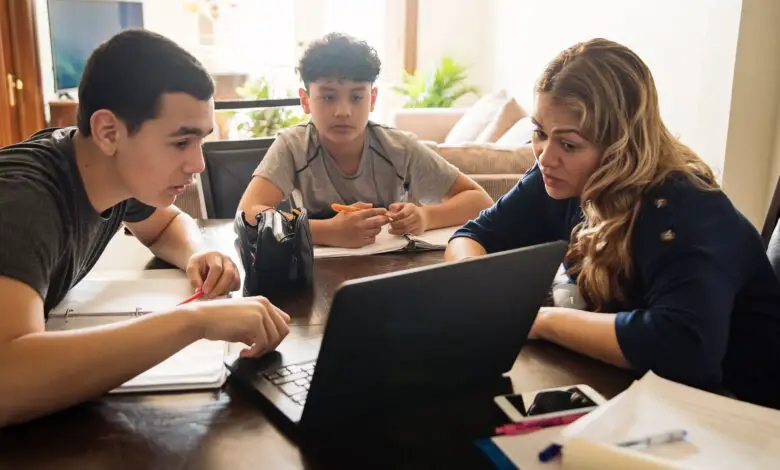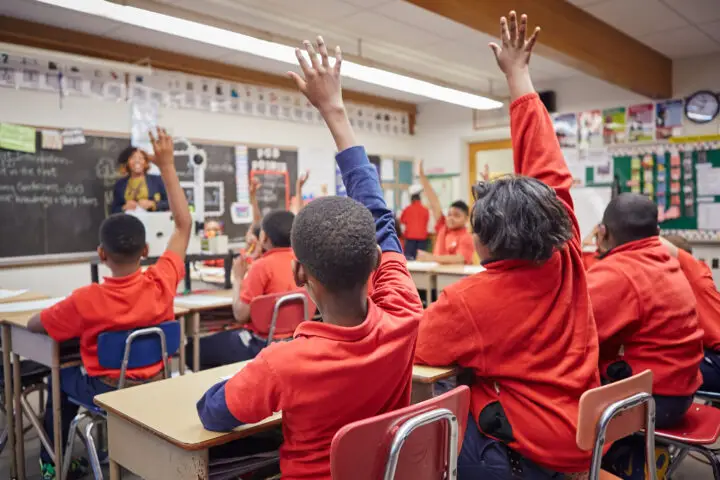10 Ways to Keep Elementary Students Engaged in Learning

Everyone knows elementary school teachers have the most difficult job. They are not only babysitters but they are trying their best to teach the upcoming generations of doctors, lawyers, engineers, etc all while their little brains are still developing and their bodies still need to be very active. The average attention span of an elementary student is 10-15 minutes.
1. Age Appropriate Material

If a concept is too advanced for the group of students you are teaching they will lose interest very quickly because they can’t understand what is being taught. When connections are not being made or students feel like they will not be able to grasp a concept they will simply tune out and daydream or start causing trouble. Age appropriate material will also be more naturally engaging because it will be more applicable to them and the things that they experience each day.
2. Frequent Activities and Movement
There are so many ways to make learning fun. Learning activities are proven to be effective because students remember them. When you incorporate movement into learning the brain creates more connections which also helps students retain what is being taught. At this link you can find a list of idiom activities, but she also has a website full of activities for other curriculum as well. https://appletasticlearning.com/2020/11/19/fun-idiom-activities/
3. Student Involvement

The obvious solution to keeping children engaged is to have them be involved hands-on in the learning process. This could be acting out, answering questions, drawing pictures, reading out loud, etc. Students should have some responsibility and control over what they are learning and how. They will be more likely to engage and remember what they learn if they are more involved in the process. In other words, getting up and lecturing a room full of five year olds probably won’t be very effective.
4. Shorter Lessons
As mentioned earlier, the attention span of these children is very short. They say the attention span is 2-5 minutes multiplied by their age. So, ideally you might get 30 minutes out of an older elementary student, but even then, the shorter the lesson the better. Teaching simple and concise concepts that are of the most importance and leaving out the unnecessary parts will have a greater impact in the long run.
If a concept is too advanced for the group of students you are teaching they will lose interest very quickly because they can’t understand what is being taught. When connections are not being made or students feel like they will not be able to grasp a concept they will simply tune out and daydream or start causing trouble. Age appropriate material will also be more naturally engaging because it will be more applicable to them and the things that they experience each day. Kids Academy provides educational materials that are tailored specifically for the age, try to find something for your child.
5. More Variety

Keeping students involved and spending less time per topic is a good start but not enough. Variety is essential in maintaining attention. While the schedule itself can be standard, predictable and somewhat mundane, the variety of activities should be diverse.
This keeps young students’ minds guessing and prevents boredom. Boredom is a thief of learning and can make even the brightest children struggle. One of the challenges we see today is a high number of students with ADD or ADHD. Catering to this style of learning will work more often than not.
6. Work as a Team
Working together with classmates is fun for kids this age. Group work at this level can build friendships that help students feel more comfortable at school and in their classroom which is also an element of success in learning. When assigning teamwork or group work it is going to be extra important to have specific instructions and make sure that students stay on task. One good way to do this is to combine group work with an element of competition or presentation. Students this age love presenting their work to the class.
7. Friendly Competition

Competitions can get out of hand fast. Emotions can run high, feelings can get hurt, physical injury can even occur. But, if you are smart, you can create a friendly competition that will motivate and engage students. Competition can happen on an individual or team level and can be big or small.
Competition is also a good way to see whether students are really grasping what is being taught. Students will typically try their best to win and are motivated to do their best especially if a prize or incentive is on the line. This can be a chance to decipher between what students just are not applying themselves and which ones really need more help.
8. Creative, Interest-based
The content of what is being taught should be interesting to that age group. As age changes so do our interests. For instance, if you were a highschool teacher it might be wise to assign a social media related project. If you are teaching a group of elementary students you might assign a report on animals or other interests like trains or ballet.
With such a short attention span and limited skills, it is best to start an assignment from a place where the student feels comfortable and confident. Asking an elementary student to write about politics or even history is probably not the best idea.
9. Be Enthusiastic
A prerequisite for being an effective elementary school teacher is having a lot of personality. Just like when a kid falls down they will look to the adult to know how to react. Your students will feed off of your energy, so if you are excited about the topic or assignment, it is much more likely that they will be too.
If you are monotone in speaking their little brains will tune you right out. Try to not only act excited, but be genuinely invested in the topics you cover. If you do not find that level of curriculum interesting, it may be best to switch to a different grade level.

10. Tell Stories
Stories make relatable connections for students to understand new concepts. Stories are also an engaging way to make those connections. Telling a story is going to be a much more effective way to talk about a topic than simply giving a bullet point list of information. Any time you are just standing in front of a classroom lecturing, students of any age are much more likely to tune out and their minds will wander.
Learning can and should be fun. There are so many creative ways to get kids moving, using their creativity, and working together. If you have tried and true methods for keeping students engaged, leave a comment below!
